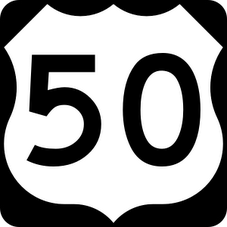Recorded Attendees: Wayne Spiggle-Mineral Co., Gary Howell-Mineral Co., Kolin Jan-Mineral Co., Mona Ridder Cumberland Time-News, Melvin Hott-Hampshire Co., Frank Whitacre-Hampshire Co., Mitch Davis-Hampshire, Co., Steve Slonaker-Hampshire Co., Chris Wakim-WV 1st Congressional District Candidate, Ruth Rowan WV 50th District Delegate, Peggy Oliver, Arvin Hwash-Preston Co., Dave Sypolt-Preston Co., Darwin Wolfe-Preston Co., A. Craig Rotruck-Preston Co., Royce B. Saville-Hampshire Co., Les Shoemaker-Hampshire Co., Ken Musgrave-Mineral Co., Evelyn Baker-Hampshire Co., Charles Baker-Hampshire/Mineral Co., Larry Weaver, Brian Carr-WVDOH Charleston, Mark White-WVDOH Charleston, Don Graham, Wood William-Grant Co., Dave Beard-Garrett County, Peggy Jaimson-Garrett Co., John Wagoner-Hampshire Co., Larry Lemon-Sen. Rockefellers Office, John Raese-US Senate Candidate, Richard Feigley-Garrett Co., Dawn Parson-Guest Speaker.
Unrecorded Attendees: Lotta Neer-Representing Alan Mollohan, Cindy Pyles-Mineral Co.
Total Attendees: 63
Opening: Lunch took place at Hagenbuch’s Loaf’in Around Restaurant, but do to the larger than expected size of the meeting it was moved next door. Wayne Spiggle Called the meeting to order at 1:30. Wayne gave a brief background on the founding of the US 50 association. Wayne asked Gary Howell to remove “Candidate for Mineral County Commission” from his e@mail signature when sending out US 50 Associations e@mails. Wayne stated the reason as the US 50 Association was founded as a non-partisan political group.
Introductions: Wayne asked all people running for elected office to stand and introduce himself or herself. He started with federal office, then state, then local. Gary Howell was asked to introduce the Federal Funding Subcommittee. The Press and others introduced themselves.
Old Business: Brian Carr of WVDOH spoke on the US 50 needs study and the progress. He indicated that over 77 projects had been listed.
Gary Howell distributed copies of the US 220 Route support letter, agreed to at the March meeting. The letter had been presented to WVDOH and MDSHA at the Moorefield US220 meeting in April.
Gary Howell was asked to speak on the Small Projects list, which was to be presented to the congressional delegation. Gary deferred to Brian Carr and asked if Brian had received the projects that had been missing. Brian stated that he had received Garrett County’s, but was still missing Grant and Taylor Counties projects.
Gary Howell was asked to speak on the proposed “Super-2” Standard. Copies of the standard were distributed to the group. Gary explained that the “Super-2” concept and how it could be used along US 50. Letters requesting that the “Super-2” standard be added to the Appalachian Development Highway System were presented to the representatives from the Federal delegation.
*Letters not picked up were mailed the following day.
Evelyn Baker spoke on WV Senate Bill 673, which gives counties the ability to raise funds for road projects. There were two bills that were similar, and it was indicated by Chris Wakim that S.673 had not passed.
* Review after the meeting provided that S.673 had passed, and the other bill had not. S.673 was signed into law on March 23rd, 2006, and is currently available for WV counties to use for road funding.
New Business: Review of switching the US 50 Association from a consensus format to Roberts Rules of Order was tabled until the next meeting. Les Shoemaker that presented the idea agreed to this.
Gary Howell stated that WVDOH had lowered the weight limits on the WV 93 Bridge at New Creek. This will increase truck traffic on US 50 from Mount Storm in Grant County to Claysville in Mineral County. This section is down Allegheny Front and has been know for it accidents involving trucks.
Karen Allen at WVDOH called Gary Howell just prior to the meeting and indicated that through the efforts of the Planning Commissions and Chambers of Commerce in Preston and Taylor Counties, US 50 had been designated a “Scenic Byway” and that the state had installed signs. Brian Carr of WVDOH had indicated that this would change the type of signage that can be located on US 50 and limit some of the upgrades that can be done. Darwin Wolf of Preston County indicated that Preston County had no Planning Commission. Karen Allen said she could be available for a US 50 meeting to explain what had happened.
Darwin Wolfe reminded people that the coast-to-coast US 50 yard sale is being held May 19th thru May 21st along US 50.
Wayne Spiggle presented the group with a letter he received about signage on US 50 to promote it or remind people that it is a coast-to-coast highway. The letter suggests that signs be placed at the state borders give the distance to the ends. The letter had the following to photos in it.
John Lusk of WVDOH was presented with the letter.
* Speaking with John Lusk after the meeting, he is giving the letter to the proper WVDOH division. John thought that a sign at the Virginia State Line in Hampshire County could read the mileage to Romney, the MD State Line and Sacramento. An eastbound sign at the Maryland line in Grant County could read the mileage to Romney, the VA State Line, and Ocean City, MD. A west bound sign at Preston County’s entry would read mileage to Clarksburg, the OH state line and Sacramento, CA.
Citizens Concerns:
Dawn Parson spoke of her daughter’s tragic death on US 50 at the Mineral/Hampshire County line, and stressed the fact that the condition of the highway was the underlying factor. Dawn ask the federal representatives to look into Home Land Security money for upgrades to US 50, and ask the state to increase the number of DOT officers patrolling in the Eastern Panhandle.
Jerry Giffin spoke of his brother’s death on US 50 near Capon Bridge. Again the condition of the highway design was stressed at the underlying factor.
July Meeting:
Grant County, WV will hold the next meeting at a place to be determined. The date will be July 19th, 2006.
Meeting Adjourned at 3:30 PM
